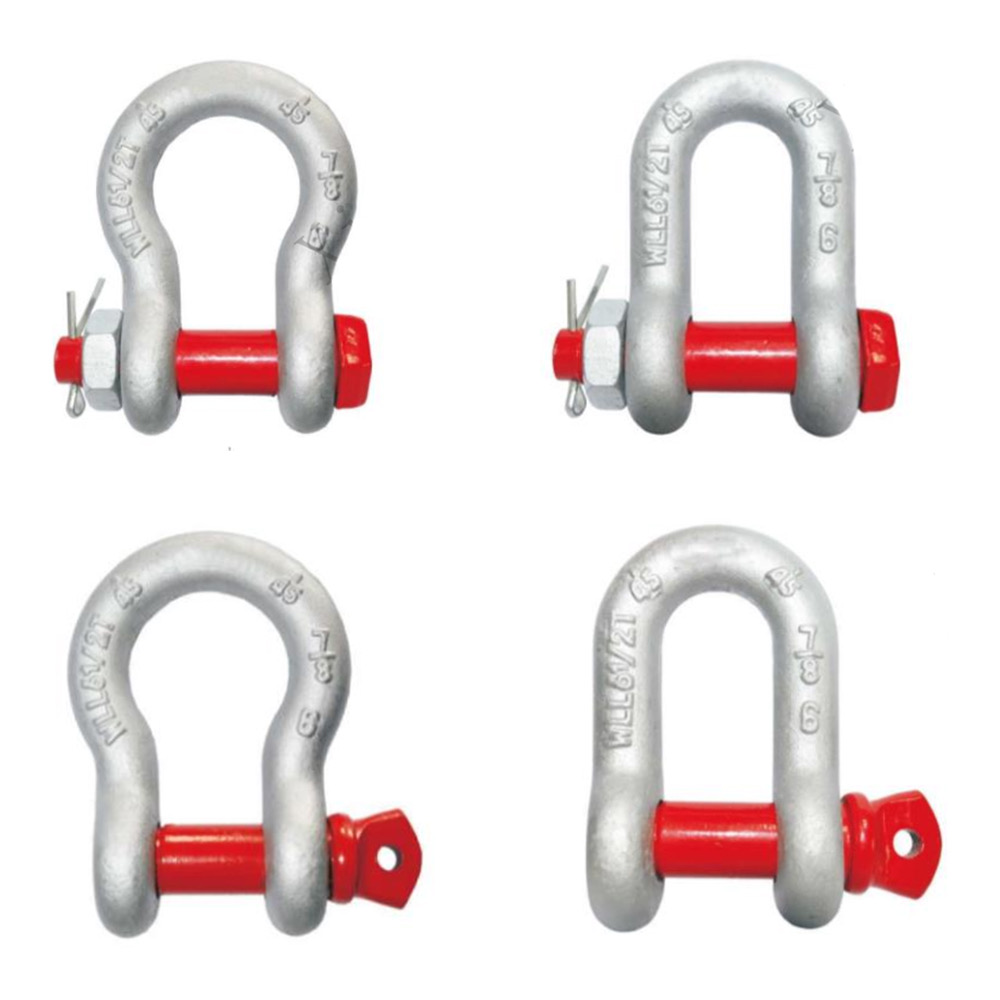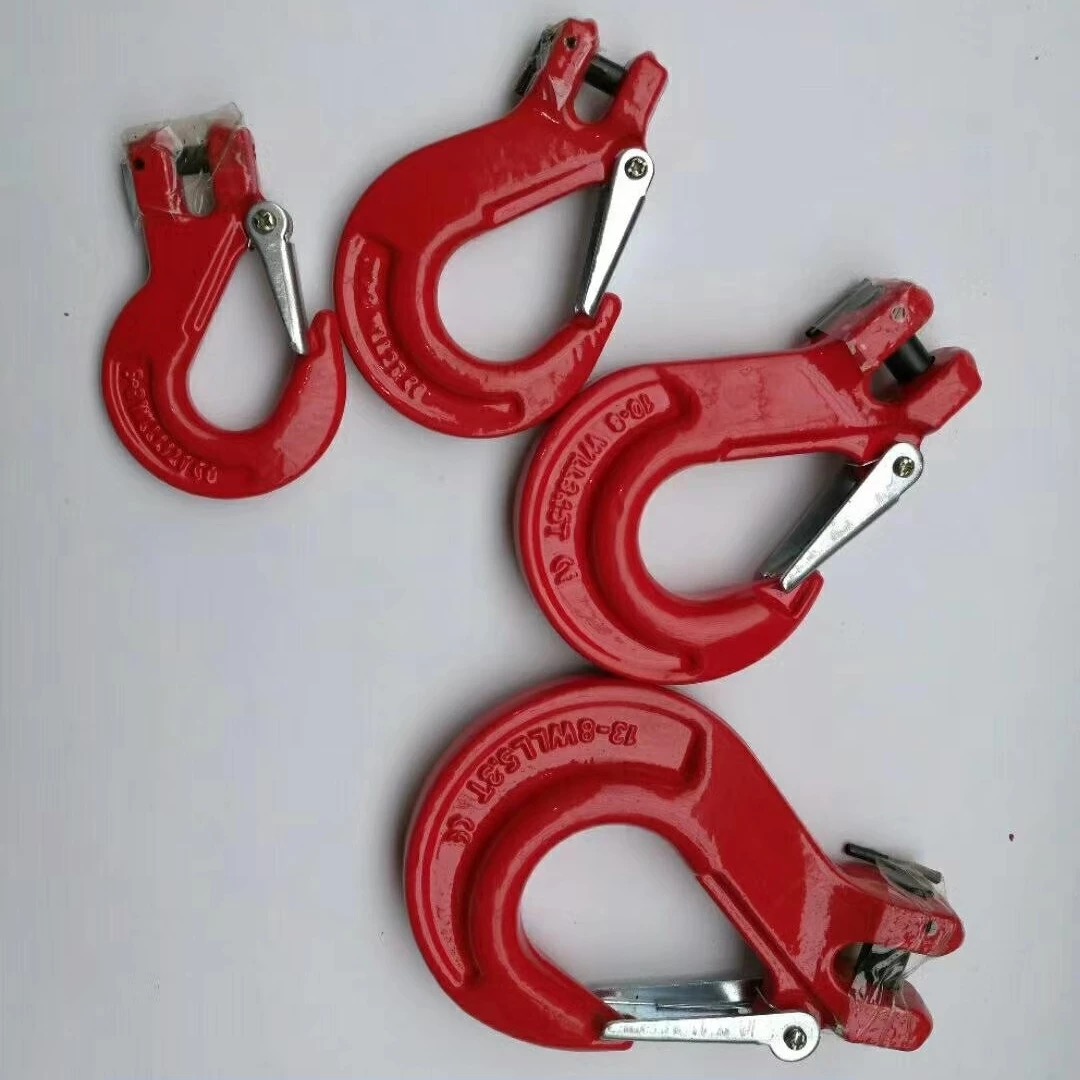Our staff will contact you within 12 hours, You can also contact us through the following ways:
Contact US WhatsApp: +8618766656705
- Email: [email protected]
- Tel: +8618766656705
- Web: https://www.toponechain.com/
Riggers, mechanics, and trailer techs say “shackle” and “clevis” every day, yet many crews still mix the two and lose safety margin. You avoid that confusion when you learn the geometry, the markings, and the standards behind each part. This guide explains the difference between a shackle and a clevis, shows when each tool makes sense, and lists sizing and inspection steps you can apply on the beam, at the hitch, or under a machine. Read it once, carry the table, and train your team with the picture below.
You pick a shackle when you connect slings, chains, or rigging hardware for a lift. The body forms a “U” with a removable pin; the crown carries the marking. You meet two main shapes:
Bow (anchor) shackle—wide crown that tolerates changing leg angles.
D (chain) shackle—narrow profile that favors straight, in-line pulls.
Common pin systems include screw-pin (fast rig-derig) and bolt-type with nut and cotter (long service, vibration zones). You confirm suitability by reading the crown: WLL, size, maker ID, and trace code must appear per ASME B30.26 or EN 13889. You keep the pin through the hardware and the bow toward sling legs, because that orientation reduces pin bending and protects threads.

You reach for a clevis when you need a yoke and a clevis pin to make a quick, shear-loaded joint. Farmers use clevis yokes on cylinders and linkages; tow techs use clevis-grab hooks on transport chain; some hoist components also use clevis-style ends to connect directly to chain. The term describes the connection style, not a single product family.
You still read the metal, not the brochure: a clevis used on transport chain (G70) supports cargo tie-down, while a clevis on alloy lifting hardware (G80/G100) supports overhead lifting when the part carries a WLL and a relevant standard. You check the tag or data sheet for ASME B30 references on lifting parts, and you follow SAE/road rules on tow or trailer assemblies.

Feature | Shackle | Clevis (yoke, pin, or hook style) |
Primary idea | Rated lift connector | Yoke + pin joint or chain connector style |
Typical shapes | Bow (anchor), D (chain) | Yoke with cross-pin; clevis-grab/clevis-slip hooks |
Common standards | ASME B30.26, EN 13889 | Depends on product: ASME B30 families for lifting hooks; SAE/road specs for towing; OEM specs for linkages |
Markings you need | WLL, size, maker ID, trace code on crown | WLL and grade on lifting parts; size and maker on transport parts |
Angle tolerance | Bow handles multi-leg angles well | Clevis joint expects in-line shear; hooks tolerate limited angles only |
Typical uses | Sling connection, equalizer beams, spreaders | Hydraulic linkages, tow chains, chain-to-hook terminations |
Fast choice rule | Use to join slings or hardware for overhead lifts | Use to make quick joints or to connect chain ends per duty |
Overhead lifting with chain slings
You connect the master link to the load with a bow shackle so the legs can move while the pin stays straight. You verify a rated WLL, a legible crown stamp, and the same grade family across chain, hooks, and shackle.
Cargo tie-down and towing
You assemble clevis-grab hooks with G70 transport chain on a trailer or a rollback. You confirm transport markings, you keep “NOT FOR OVERHEAD LIFTING” away from cranes, and you cross trailer safety chains under the coupler.
Machine linkages and cylinders
You mount a clevis yoke and pin on a rod end because the joint must rotate slightly under shear. You size the pin to the bore, you use the correct bushing, and you secure the pin with cotter or clip per the OEM drawing.
Match rating families. Join G80 chain with G80-rated hooks and shackles; join G70 chain with transport hooks. Mixed ratings drag the assembly down to the weakest link.
Fill the bearing. Choose a shackle pin that nearly fills the hardware eye or chain link; small pins cause point loading and notch stresses.
Check bow clearance. Ensure the bow ID clears the master link or connector so legs move freely.
Respect geometry. Keep shackle loads in line with the pin; keep clevis pins in pure shear; avoid side loading on any swivel or hook.
Read every stamp. Look for WLL, size, maker, and trace codes; reject unreadable parts.
You run the same steps every time and you log them:
Clean and read—remove rust or paint that hides markings; record WLL and size.
Measure wear—gauge crown wear on chain links; measure pin and bore on clevis joints; compare to the maker’s limits (many programs retire chain at 10% crown wear or >3% pitch growth over five links).
Check straightness—roll shackles and pins on a flat plate; replace bent parts.
Prove the latch—cycle hook latches ten times; they must close and spring back.
Confirm alignment—dry-fit the system; the pin should seat without force, and the line of pull should run straight.
Document the setup—write serials or batch IDs and shoot a photo of stamps for your file
“A clevis always equals a shackle.” No—clevis describes a joint; shackle names a rated connector family.
“Any transport hook can lift.” No—transport gear supports tie-down; lifting gear carries WLL for overhead use and cites a lifting standard.
“Bigger always means stronger.” No—ratings follow material, heat treatment, and design; the stamp and the certificate carry the authority.
“One part can solve every angle.” No—use bow shackles for changing angles; keep clevis joints and grab hooks in line.
Job | Right Choice | Why |
Two-leg sling on a shifting load | Bow shackle | Bow tolerates angle change and keeps pin straight |
Straight in-line pull with chain | D shackle or straight linkage | Narrow body keeps the line centered |
Trailer tie-down with transport chain | Clevis-grab hooks + G70 chain | Grab profile holds links and supports transport duty |
Cylinder or linkage connection | Clevis yoke + clevis pin | Joint allows small rotation in controlled shear |
Learn the difference between a shackle and a clevis, match each part to its standard and marking, and size pins and bows to the actual geometry, and your rigs will run safer and smoother—contact TOPONE CHAIN today for rated shackles, clevis-style hooks, and full documentation for your next job.